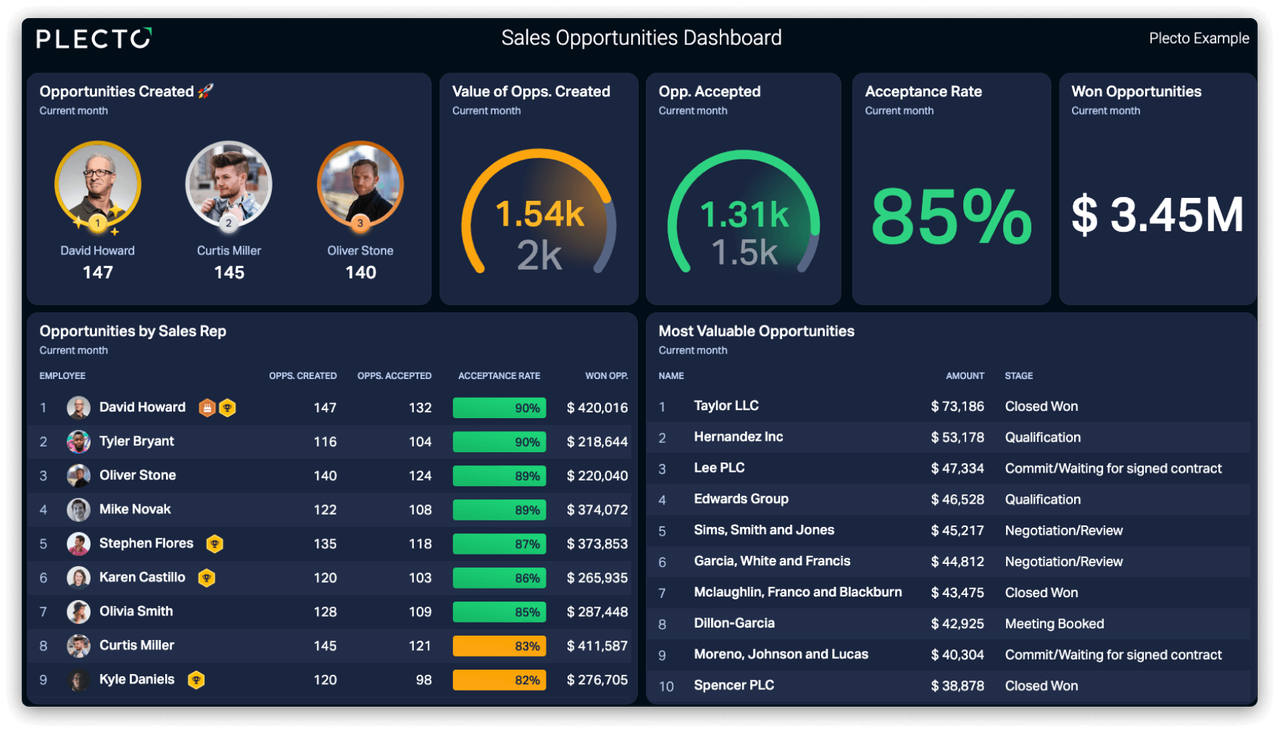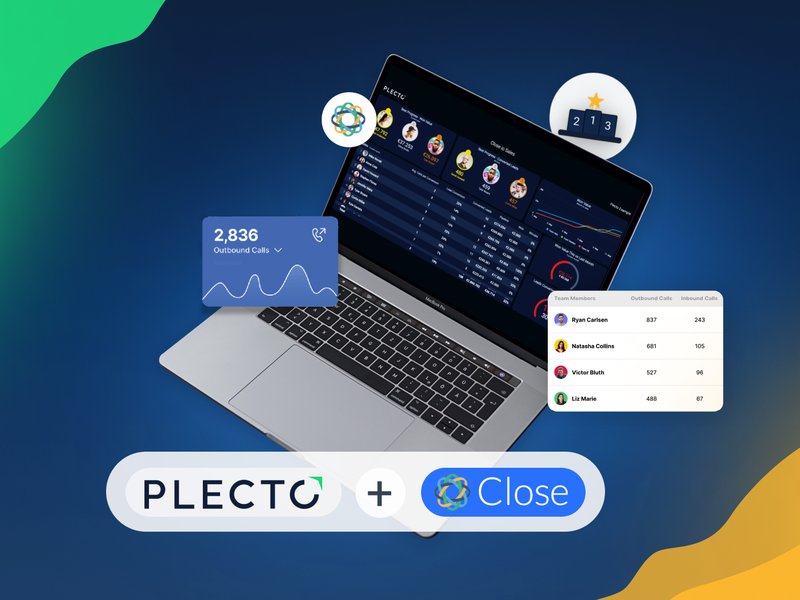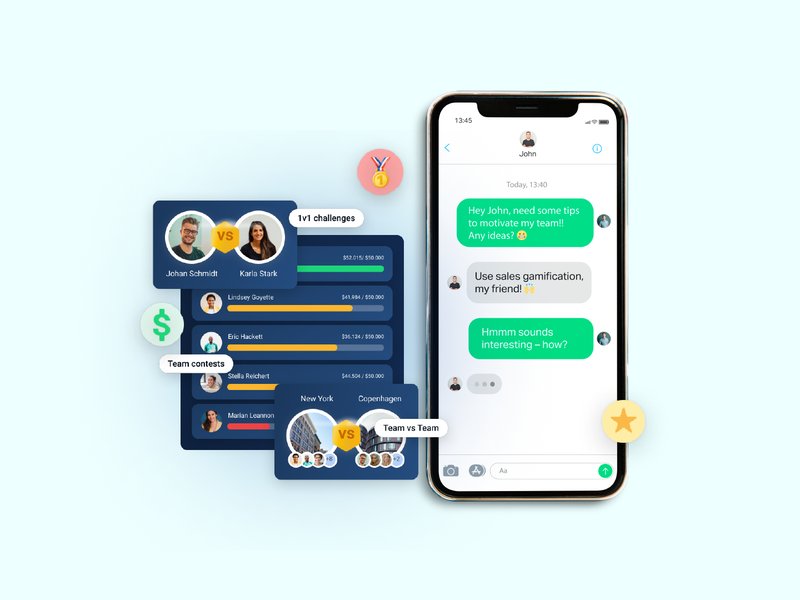Managing the business process from the perspective of different sales funnel stages brings considerable gains in both visibility and metrics. Each sales funnel stage can give you valuable insights into some of your relevant KPIs, such as the Conversion Rate or the Sales Cycle.
However, it’s important to know how to use this information in the best way for your business.
How to interpret the different sales funnel stages correctly?
Although many companies aim to have a B2B sales funnel full of open opportunities, the reality is that this is not always an indicator of a healthy business. Moreover, it can even be a symptom of a decadent performance!
If opportunities have been stagnating for a long time in the same phase of the funnel, it might mean there is an issue preventing negotiations from flowing correctly. The causes vary from business to business, but the usual reasons are that prospecting may be directed to the wrong ICP, your sales team is incorrectly approaching the negotiation, or there are aspects in the negotiation that stop opportunities from becoming actual clients.
In order for you to have an analytical look at your pipeline sales funnel and extract relevant information for your business, we have listed the 4 main factors you want to take care of.
1. How many businesses does your B2B sales funnel have at each level?
This number not only contains the total amount in all sales funnel stages, but also includes the distribution of business across its different levels.
Ideally, to guarantee a constant B2B sales funnel flow for the company, there should be a balanced distribution throughout the different levels. This way, there would always be new business opportunities for your sales teams to contact.
That is, the number of open opportunities in the qualification level should be similar to the number of opportunities in the proposal, which should be similar to the number of opportunities in the negotiation phase and so on.
If, for instance, there are many businesses in the proposal phase and few in the qualification phase, it means that you probably need to intensify the prospecting because your sales team doesn’t have enough new prospects in the B2B sales funnel.
However, if there are many opportunities in the qualification phase and few in the proposal phase, it means that the process to guide prospects through the funnel levels is not efficient.
A pipeline for sales should be seen as a flow, a path that leads the prospect to become a customer. This is why it’s only natural to expect your opportunities to move through the levels to keep an active funnel
2. How long does each opportunity stay at a certain stage of the sales funnel?
Another important point is to identify how long each opportunity has been at a certain level of your B2B sales funnel.
Therefore, your sales team has to keep an eye on how long each opportunity stays at the same level. If an opportunity hasn’t evolved in the expected time, it might be necessary to analyze it and identify the reason for the stagnation.
Let’s see an example. Imagine that your negotiation phase usually lasts three weeks, and an opportunity has been in the same phase for almost two months. Something is wrong, right? Perhaps the follow-up was not done correctly, or the prospect is not ready to decide yet. Perhaps a counterproposal has not been properly assessed internally. Or it can also be that the Lead Manager on your team simply forgot about that opportunity in the funnel.
However, the solution is quite simple. You can easily check the history of interactions recorded in your CRM system, to confirm when the last conversation happened. Apart from that, you can always reach out to the specific Lead Manager to get better insights or reasons about what happened with lead generation sales. Together, you can decide whether to resume the negotiation or decline the opportunity.
Another common scenario is that the stagnation recurs at a specific stage of the sales funnel while other levels are still active and dynamic. To solve this situation, it can be of great help to analyze the business stuck at this level, to identify possible common factors. This can give you an idea of what part of your strategy to reconsider, whether it is the negotiation terms or even the value proposition in the first place.
But how to know what is the expected time of stay at each pipeline sales funnel level?
Firstly, each process in the funnel for sales is different. Some evolve quickly, others can take some more time. The sales cycle of each business is unique, as well as the average time in each stage.
Therefore, the only way to get the most accurate information for your business is to analyze your own B2B sales funnel over time. Start measuring the expected time at each stage for the different industries in your funnel, and you’ll eventually reach a reference average.

Build your first dashboard.
Start your 14-day free trial today
3. When did you last contact the lead?
Getting the prospect to move through the pipeline sales funnel to become a customer will require a series of interactions with your sales team. On average, closing a deal after a meeting requires a minimum of 5 follow-up contacts!
This gives you an idea of how important it is to keep an eye on your open opportunities, and when was the last time you contacted them. Make sure that the business is being actively monitored and that the follow-up requirements are being completed.
If your business's lead generating sales are performing well, it does not matter. In the beginning, leads are particularly sensitive, thus it is often advised to give them all the care possible. A "forgotten" business rapidly loses energy and conversion potential. Therefore, make sure to clearly identify those opportunities that need attention, so your sales team can prioritize their contacts according to this. This will considerably reduce the chances of losing an opportunity in your pipeline sales funnel.
4. What is the next step with your open opportunities in B2B sales funnel
Another important factor related to the contacts from your sales team to the prospects, it’s necessary to establish clear action points for each of your opportunities. This will also help them notice that they are being taken care of. An action point can vary from a follow-up email or a call to a meeting or a proposal submission.
Ideally, every contact with your prospects ends up by scheduling the next action point, as well as the specific date and people involved. Moreover, registering these action points in your CRM system will help your sales team track tasks and meet deadlines.
In order to guide this process, it can be helpful to have pre-defined flows and protocols for the follow-ups, prospecting, and re-engagement. It allows your team to know what to do at any point in B2B sales funnel, as well as to guide the negotiations in the right direction with every business in your pipeline.
This is a guest blog post written by Carlos Henrique Campos, Founder and CEO at Mkt4Sales.




